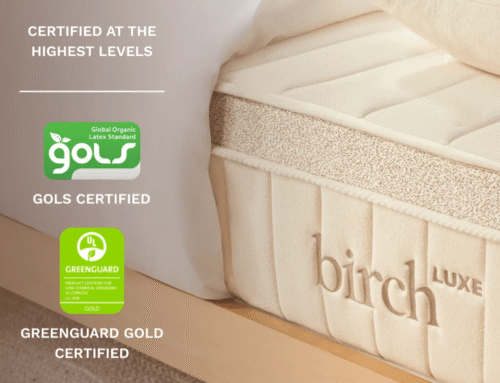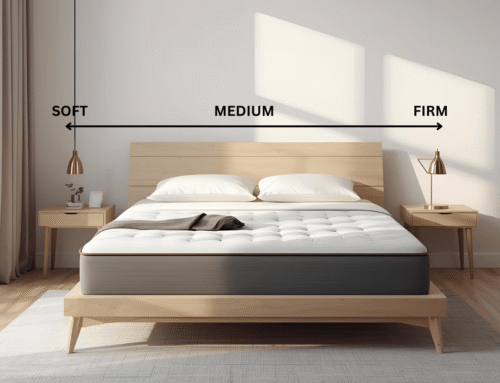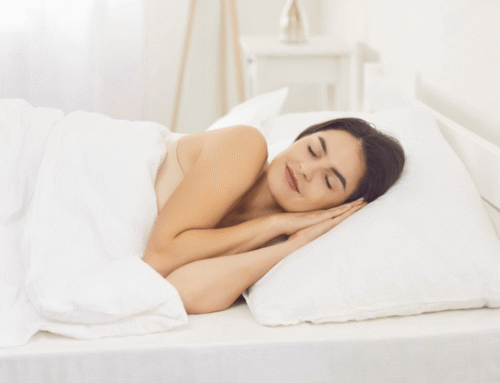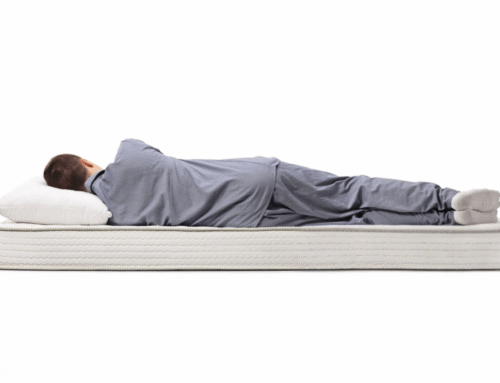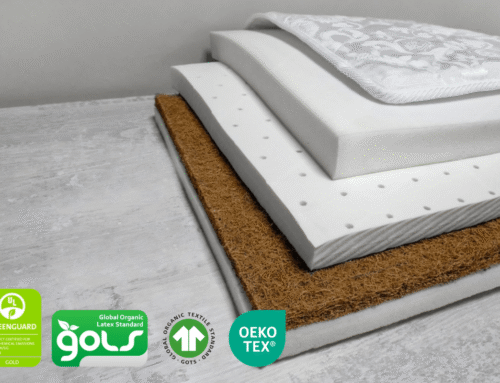Innerspring mattresses have been around for decades, and many still trust them for a reason. The first innerspring mattress was invented many years ago and has since evolved to improve support and comfort. They use a coil-based support system that lasts over time, which is great to those who prefer a firmer and more traditional feel. Unlike foam beds that sink, this type feels steady and balanced, which some sleepers find more comfortable.
What sets these mattresses apart is the core made of steel coils. These springs give them that familiar bounce while allowing air to move through the layers, so they don’t trap heat as much as all-foam beds. Depending on the coil type and how they’re arranged, some models feel more supportive at the edges or quieter through the night.
Comfort can vary depending on the top layers added over the coils. Some use soft foams or quilted tops to cushion the firmness underneath. In the next section, we’ll get into how those layers work, the kinds of coils used, and which sleepers typically enjoy innerspring beds the most.
Key Takeaways
- Innerspring mattresses use metal coils at the core to provide bounce, support, and a firmer sleep surface suited for back and stomach sleepers.
- Pocketed coils limit motion transfer, while interconnected coils create a firmer, more uniform feel across the entire sleep surface.
- Comfort layers like memory foam, latex, or pillow tops add pressure relief and soften the mattress without sacrificing coil support.
- These beds stay cooler due to airflow between the coils, and strong edge support ensures a stable and spacious feel.
- Innerspring mattresses are best for sleepers who move often, need firm support, or want a budget-friendly option without compromising on sleep quality or durability.
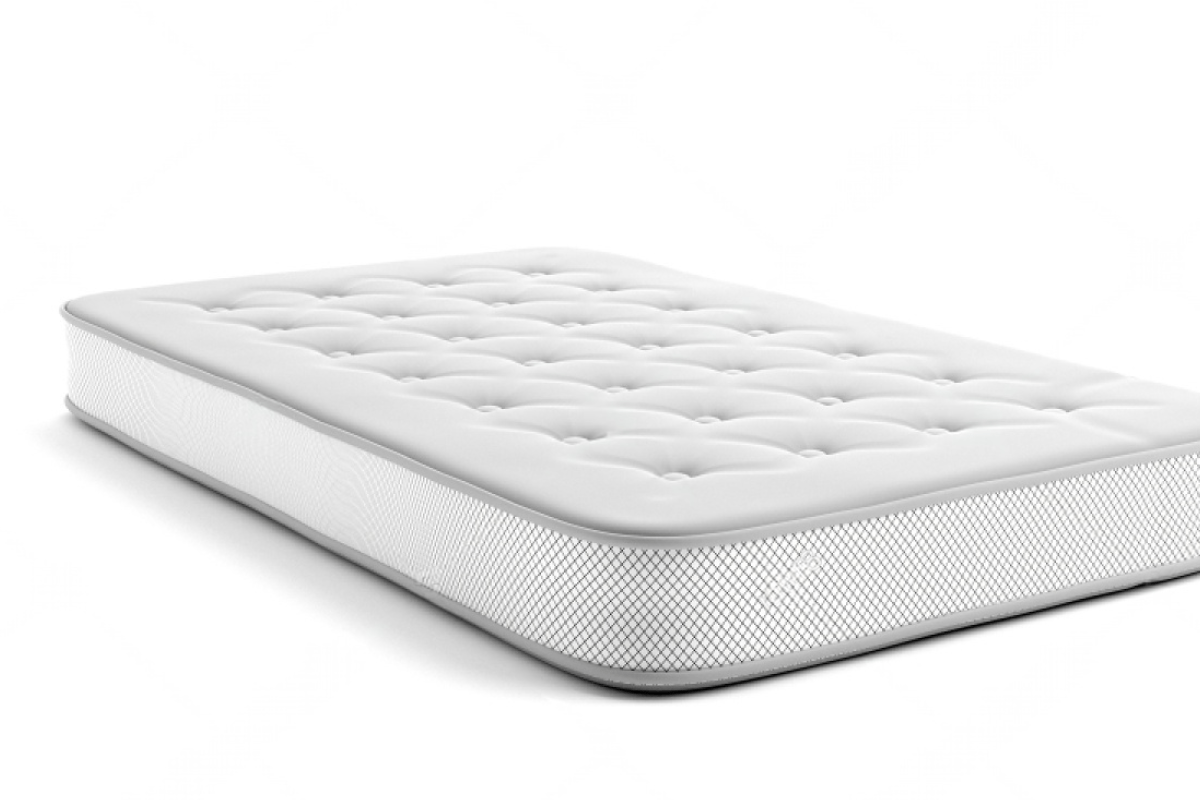
What Is Inside An Innerspring Mattress?
An innerspring mattress has a core made of metal coils that compress to support the body during sleep. These coils are usually wrapped in layers of foam or fabric, which soften the feel without removing the bounce. The construction creates a firmer base compared to all-foam beds.
Each coil type, like Bonnell, offset, or pocketed, responds differently to pressure. Pocket coils move independently, so there’s less motion transfer, while interconnected coils feel more uniform. The blend of springs and padding helps maintain spinal alignment and avoids the sink-in feeling some people dislike in foam beds.
Some innerspring mattresses include reinforced edges, which help the perimeter stay firm. This gives a stable feel when sitting or sleeping near the sides. People who share a bed often prefer this setup because it keeps the whole surface usable without that sliding-off sensation. Factors such as the number of coils, the distinction between innerspring and pocket coil designs, and the overall weight of the mattress are important considerations when selecting the right innerspring mattress.
How Does An Innerspring Mattress Feel?
Innerspring mattresses have a bouncy, responsive, and firmer side. That light springy pushback comes from the coils underneath, which react quickly as pressure shifts. Some describe it as similar to traditional hotel beds, where support stays consistent throughout the night. Unlike memory foam, these do not hug the body much, so airflow stays better and movement feels easier. The comfort layer on top adds a bit of softness, but it does not allow deep sinking. This type of support suits those who prefer sleeping on top of the mattress rather than sinking into it.
The feel changes depending on the design. Pocketed coils offer more contouring, while interconnected coils create a firmer surface. Thicker foam or pillow tops soften the upper layer, though the springy support stays noticeable. Overall, it delivers a lifted and responsive sleep experience.
Benefits Of An Innerspring Mattress
Innerspring mattresses have lasted for generations, and there’s a reason they still show up in bedrooms today. Many people lean toward coil-based beds because they offer a familiar, breathable feel and reliable support without the deep sink of foam.
- Supportive feel – The coils in an innerspring mattress provide lift and alignment, which can help reduce pressure on the lower back or hips.
- Breathable design – With space between the springs, air moves through the mattress more easily. This setup works better for people who tend to sleep hot.
- Budget-friendly – Many affordable mattresses still rely on coils. Some models include thin layers of foam for added comfort without driving up the cost.
- Responsive surface – The natural bounce from coils allows easier movement across the bed. This feature works especially well for combination sleepers who change positions often.
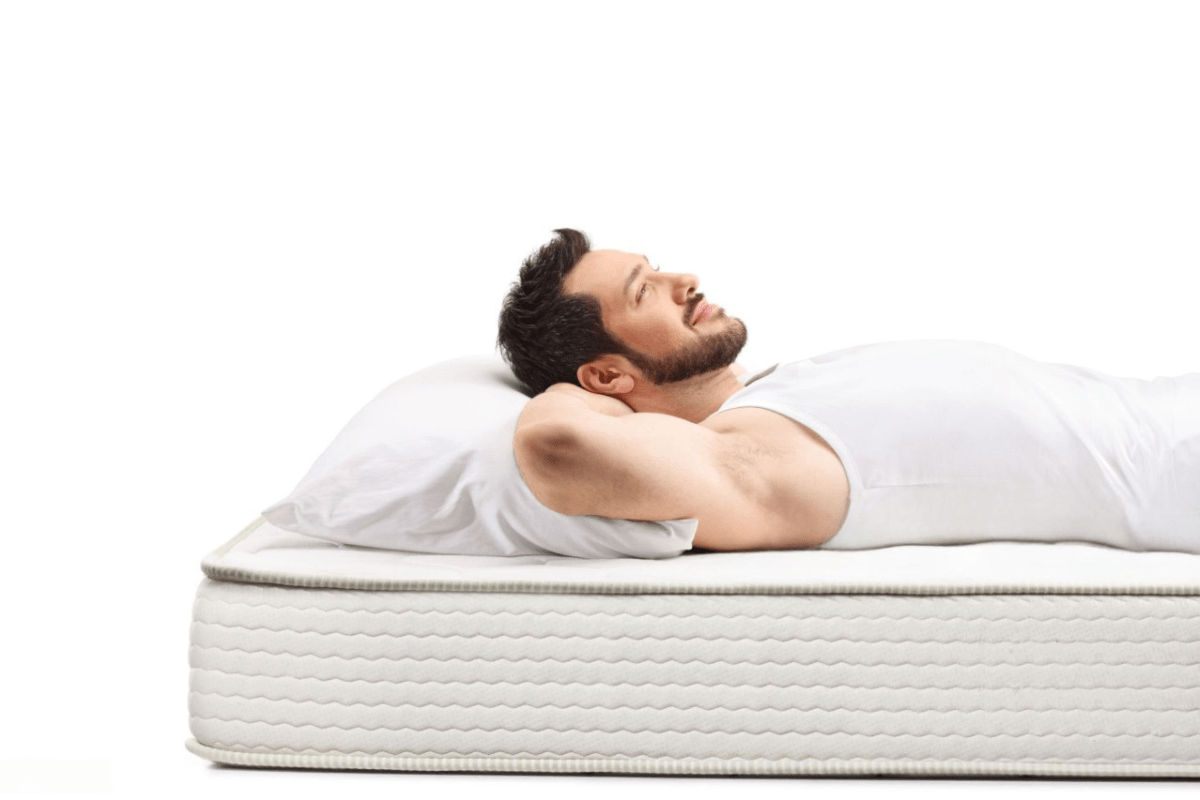
Types Of Innerspring Coils
Bonnell coils use an hourglass shape that gives a classic and bouncy feel. They’re common in older or entry-level mattresses because they’re affordable and great for people who prefer a firm and simple structure. However, the bounce can transfer a lot of movement across the bed.
Offset coils also have an hourglass shape, but they’re joined in a way that feels slightly more stable. They provide firmer support and hold up better over time than Bonnell coils. These are often used in mid-range mattresses that focus more on durability without pushing the price too high.
Pocketed coils are wrapped individually, so each spring responds on its own. That separation helps reduce motion transfer, which is helpful for people who share a bed. Compared to other coil types, these provide better contouring and support without the bounce spreading too far.
Hybrid Mattresses Vs Innerspring
Hybrid mattresses combine traditional innerspring coils with thicker layers of foam or latex on top, which blend support and softness. This design provides the responsiveness of springs alongside a cushioning feel that many find comforting. The foam layers also help reduce pressure points compared to a standard innerspring mattress.
These mattresses come at a higher price point, which reflects the added materials and construction involved. However, they appeal to those who want a balance between support and plushness without sacrificing either. The thicker comfort layers can also improve motion isolation, which innerspring mattresses often lack.
Innerspring mattresses remain a popular choice for those on a budget or who prefer a firmer and more traditional feel. They deliver reliable support through their coil systems, though they may not provide the same level of contouring or noise reduction as hybrids. For sleepers who prioritize affordability and breathability, innersprings still provide good value. Understanding the differences between hybrid mattresses and innerspring, as well as how innerspring compares to memory foam, can help you decide which mattress suits your needs best.
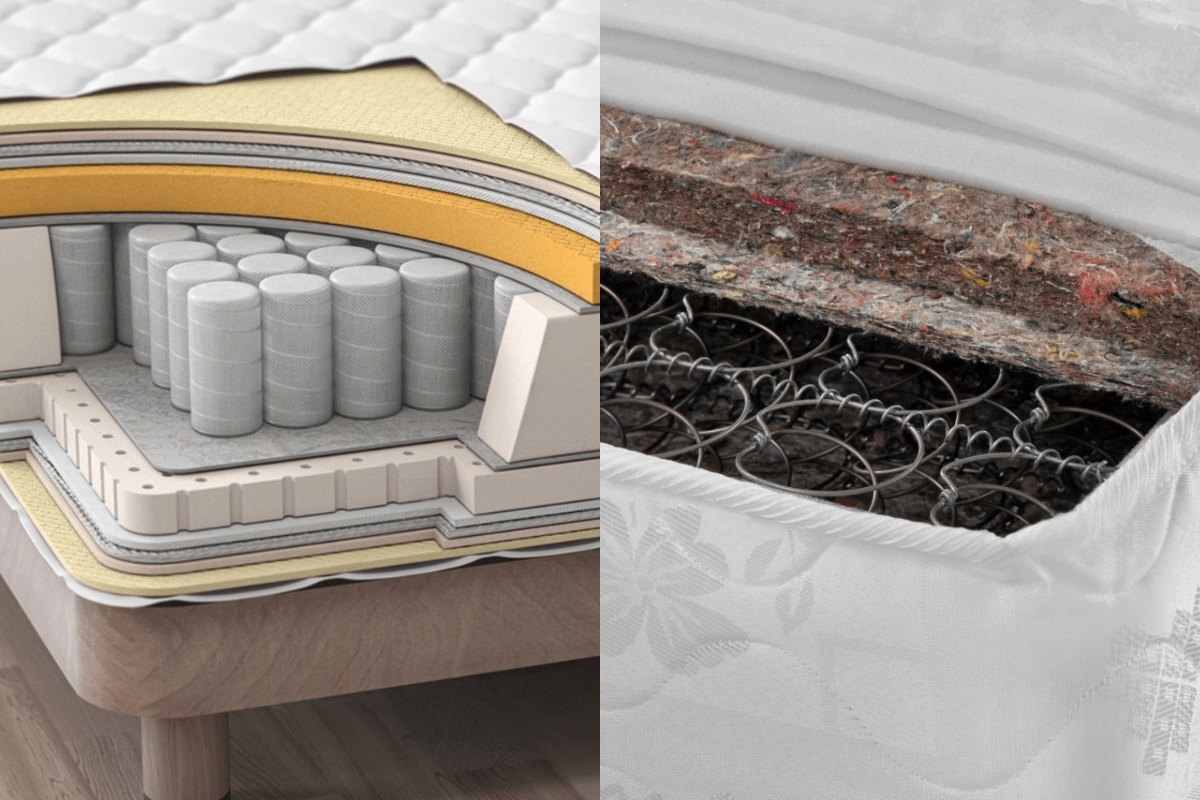
Comfort Layers On Top
The top layer on an innerspring mattress often gets overlooked, but it plays a big role in how a bed feels. Most models use materials like polyfoam, memory foam, latex, or basic fiber padding to soften the firm support underneath. Each one brings its own comfort feel, from basic cushioning to a more body-hugging or bouncy surface.
Polyfoam and memory foam are common choices. Polyfoam feels soft right away, while memory foam contours around the body to ease pressure. Latex adds a touch of bounce and stays cooler, which helps in warmer climates. Some beds stick with fiber padding, usually found in simpler models, though it tends to feel flatter over time.
Pillow tops and euro tops give extra cushioning without changing the support of the springs too much. These thick layers can feel luxurious, though they tend to break down quicker if the foam inside is low-grade. A firmer comfort layer may last longer, but a softer one can feel better right away.
Who Should Choose An Innerspring Mattress?
Innerspring mattresses tend to suit those who prefer a firmer and more responsive sleep surface. People who mainly sleep on their back or stomach often find this type of mattress supportive and comfortable. Those who move a lot during the night may appreciate how it keeps them feeling on top rather than sinking in.
Strong edge support is another benefit that draws many to innerspring mattresses. This feature helps maximize the usable sleeping area and provides stability when sitting or lying near the edges. Budget-conscious buyers often find innerspring models offer reliable support without a steep price, which appeals to many households.
These mattresses are great for guest rooms or children’s bedrooms, where durability and cost efficiency are important. They balance support and affordability, making them a practical option for spaces used occasionally or by growing kids. Overall, innerspring mattresses fit those wanting straightforward comfort without extras that push the price up. Picking the best innerspring mattress involves considering factors like coil count, coil type, comfort layers, and personal sleep preferences to find the right balance of support and comfort.
How Long Do Innerspring Mattresses Last?
How long an innerspring mattress lasts and how often it should be turned are important factors for maintaining comfort and durability. Innerspring mattresses generally last around 6 to 8 years before showing noticeable wear. The metal coils tend to remain supportive longer than the foam layers on top, which often start to sag or compress over time. This sagging affects overall comfort and support as the mattress ages.
Foam quality is essential in durability. Mattresses that use denser foams, such as latex or high-density polyfoam, hold up better and resist sagging longer than those with cheaper foam. Proper care, like regularly rotating or flipping the mattress, can help maintain even wear and slow down deterioration.
Ultimately, the lifespan depends on materials and upkeep. Regular rotation distributes weight more evenly and prevents deep impressions from forming. While coils can stay intact for years, the comfort layers usually need replacement or an upgrade to keep sleep quality consistent.
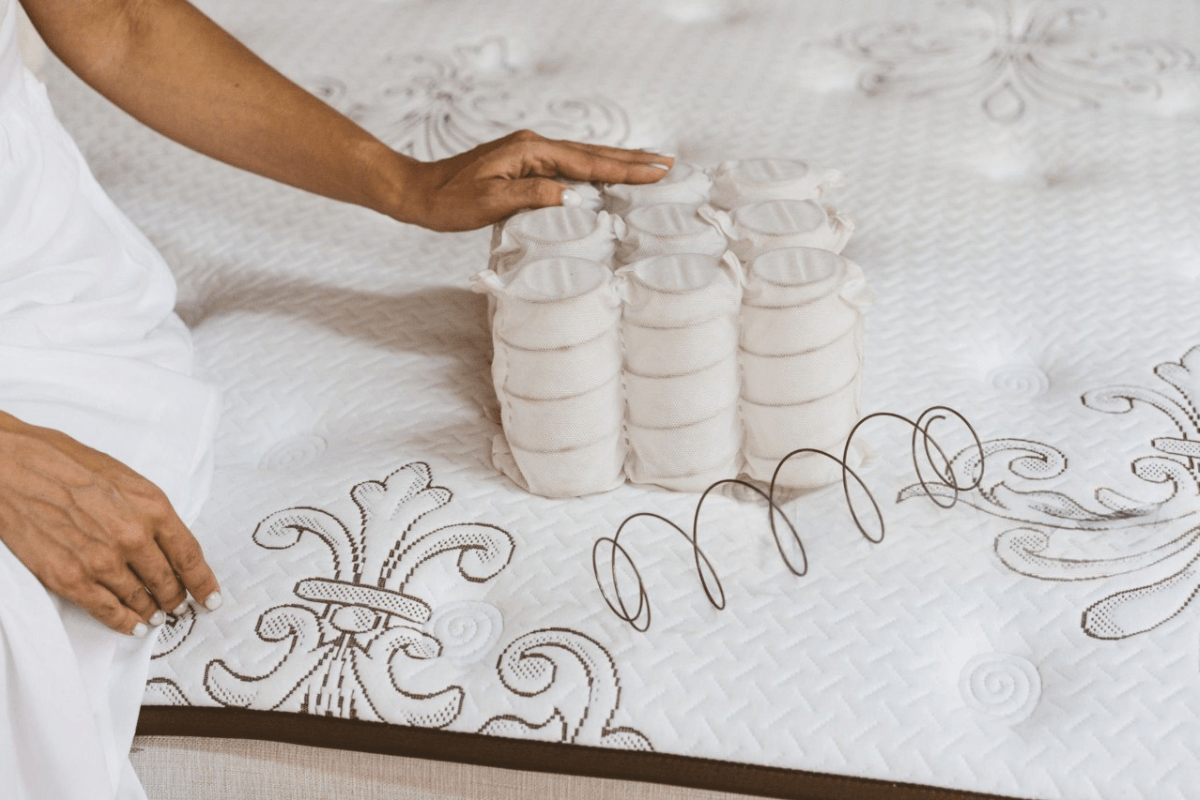
Who Should Avoid Innerspring Mattresses?
Innerspring mattresses tend to offer a firmer feel with less contouring, which may not suit those who sleep on their sides and require deeper pressure relief. Side sleepers often benefit from mattresses that cushion their shoulders and hips more effectively. Without softer comfort layers, these mattresses might leave pressure points feeling sore.
The typical innerspring design provides bounce and responsiveness but usually falls short in motion isolation, especially in models without pocketed coils. People sharing a bed who are sensitive to movement might notice disturbances more easily. Those seeking a plush, “hugging” sensation often find innerspring mattresses less accommodating.
For individuals with joint pain or conditions that demand extra cushioning, innerspring mattresses might feel too firm or unsupportive. Mattresses combining foam layers or hybrids that blend springs with memory foam can offer gentler support. These options tend to relieve aches better by distributing weight more evenly.
Final Thoughts
Innerspring mattresses provide firm support and good airflow, which helps keep sleepers cool through the night. Their bounce is appealing for those who prefer a more responsive feel, and they often come with a price that fits many budgets. These mattresses have a long history and continue to evolve with updated materials and designs.
The quality and comfort of an innerspring mattress depend heavily on the coil system and the layers of foam or padding added on top. Some models have advanced coil technology or extra cushioning to enhance comfort, while others focus more on durability and support. It’s important to compare different builds and consider personal sleep preferences before deciding.
Testing several mattresses in-store or reading trusted reviews can provide insight into how an innerspring mattress might perform. Asking detailed questions about coil count, firmness, and materials helps ensure the choice matches individual needs. Taking the time to explore options leads to a more satisfying purchase overall.

